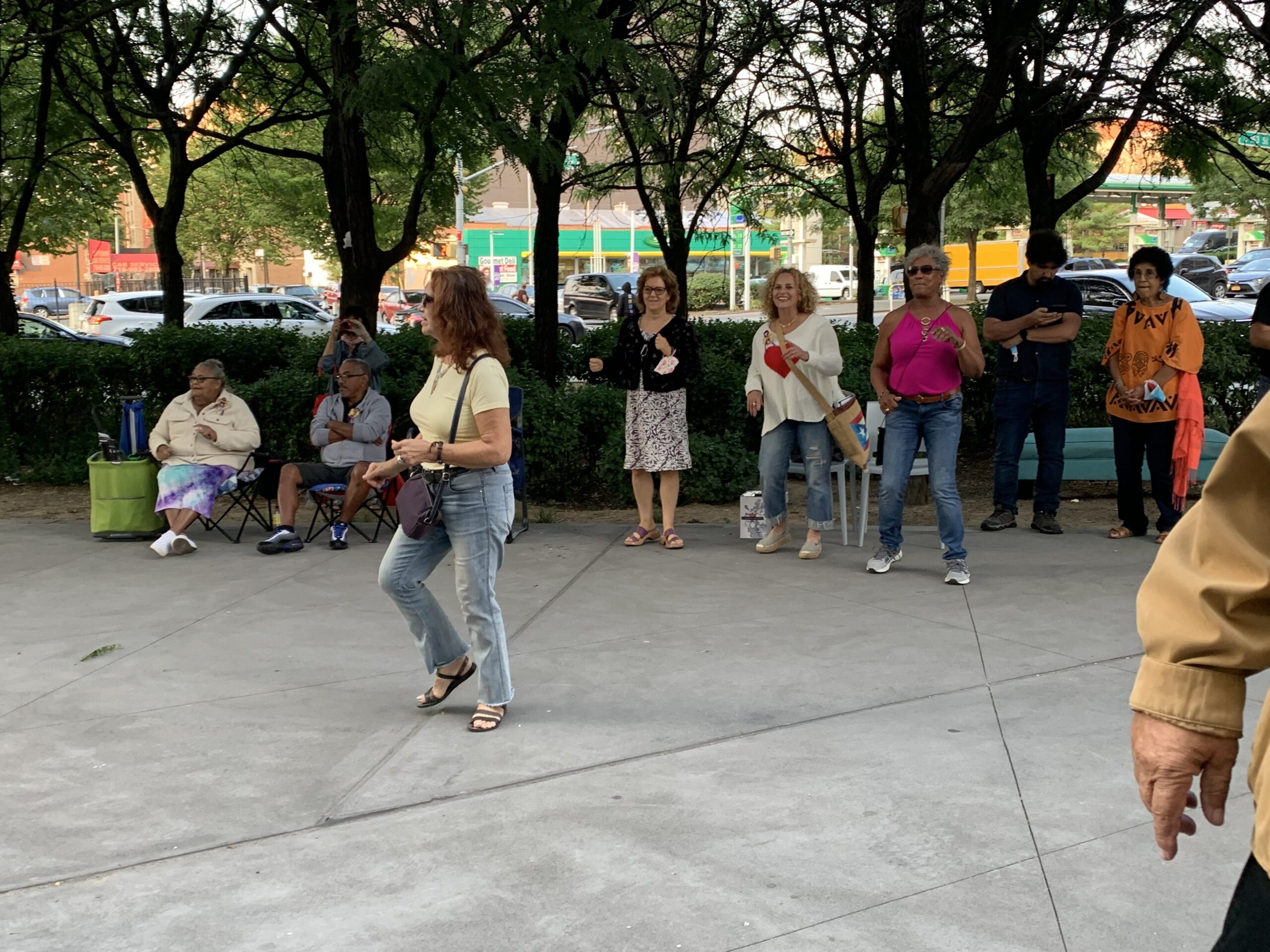Passersby quickly became an audience to a lively Latin Jazz concert at the Bronx Music Hall Plaza Saturday. The concert was the first in a month of events planned to celebrate National Hispanic Heritage Month in the Bronx.
Bronx native Kizzy Richardson and her son were walking around their neighborhood when they saw a band preparing to play at the music hall. Asked what Bronx music means to her, Richardson didn’t have to give it a thought: “Diversity, plenty of diversity in the music around here.”
Just a few minutes later, that diverse sound echoed in the air.
Equipped with a piano, bass guitar, drums, congas, tenor saxophone, flute, soprano saxophone and an alto sax, Bobby Sanabria and Abure performed a 90-minute set, in tribute to the Bronx Latin Jazz legend, Jerry Gonzalez, and his Fort Apache Band.
“Latin Jazz is the direct product of Cuban rhythm, Puerto Rican attitude, and African American tradition” said Sanabria as he pulled out his Cuban flag-beaded chekeré, a West African-derived percussion instrument often used in traditional Afro-Cuban music.
The energetic sounds of the chekere and congas, followed by the deep soulful sounds of the saxophones and bass guitar, induced joyful dancing and clapping from the audience.
The concert is part of the Bronx Rising! series curated by folklorist Elena Martinez and Sanabria. This year, the duo teamed up with the Evelina100 Centennial Celebration Committee to honor the legacy of Puerto Rican-born and Bronx-based activist Evelina Antonetty’s work in the Fort Apache movie protests.
Antonetty formed CAFA, the Committee Against Fort Apache, to protest the 1981 movie Fort Apache, The Bronx, which portrayed the South Bronx negatively and racially stereotyped its Black and Hispanic residents.
Jerry Gonzalez was invited to perform at many of these protests by Antonetty. “He wanted to show the world that good comes out of the Bronx,” Martinez told the crowd in explanation for why Gonzalez changed his band’s name to Fort Apache Band.
Gonzalez’s album “Ya yo me curé,” translates to “Yes, I have been cured.” That spirit, Sanabria said, “kept many of us alive in the South Bronx during the tumultuous times when everything around here was burning down to the ground. What kept us alive was music like this.”
To learn more about the history of Bronx music and upcoming events at the Bronx Music Heritage Center and the Bronx Music Hall Plaza, visit Thisisbronxmusic.org and follow the Bronx Music Heritage Center Facebook page.

